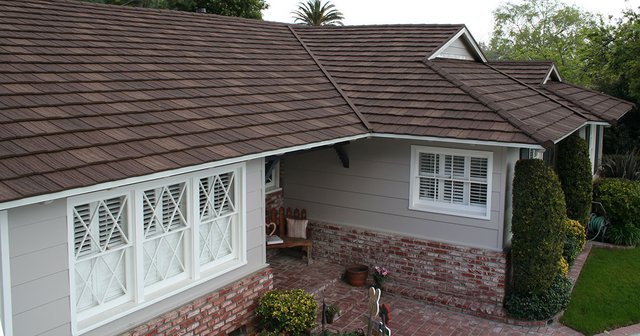
Metal Roofing Alliance Urges Local Homeowners Associations To Re-evaluate And Update Defensible Home Strategies
Contact: Darcie Meihoff, Metal Roofing Alliance (MRA), [email protected] or 971-998-3782
PORTLAND, Ore.—Many U.S. homeowners appreciate their local associations (HOAs) for working to maintain style standards, keep their neighborhoods cohesive and tidy, and protect local home values through agreed-upon “CCRs” (covenants, conditions, and restrictions).
However, in the face of climate change, the Metal Roofing Alliance is calling for HOAs to do more to allow and encourage member homeowners to make improvements that increase their neighborhood’s resiliency and offer greater protection. That includes ensuring that homeowners have the option to use materials such as metal roofing that can make a home more defensible, especially as the impacts of extreme weather and wildfire dangers increase.
Lauded as an ignition-resistant material, metal roofing also offers a myriad of other benefits, including long-lasting durability, the ability to stand up to extreme weather and better energy efficiency. While the latest consumer research conducted by the Metal Roofing Alliance indicates that metal is now the second most preferred roofing material, some HOAs still restrict the use of metal roofing in favor of outmoded materials.
The issue is particularly relevant in wildfire prone areas. Wildfire season in North America starts earlier, lasts longer and affects more areas than ever before. Over the past 12 years, every state in the western U.S. has experienced an increase in the number of large wildfires as compared to the annual average from 1980 to 2000. To help protect homes, FEMA recommends that in fire-prone areas, if a roof is covered with wood or asphalt shingles, homeowners consider replacing it with a fire-resistant material, such as metal. Metal roofing has a Class A fire rating, the highest available. That’s important because roofs are extremely vulnerable to flying embers from nearby wildfires, which can travel up to a mile away.
Renee Ramey, executive director of the Metal Roofing Alliance, says while HOAs aren’t intentionally putting homes at risk, old-school thinking can prevent better options to help homeowners “harden” their homes and increase neighborhood safety. One major misplaced reason for that, she says, is due to a lack of understanding of the many style options now available with metal roofing.
“Individual HOA design standards haven’t always kept up with the latest advancements in the market,” said Ramey. “Today’s metal roofing comes in a wide array of color options and can beautifully mimic traditional styles, patterns and designs—including clay tiles, slate, wood shake and even asphalt—while better protecting homeowners’ properties. Bottom line, if style is holding HOAs back from allowing homeowners to choose metal roofing as an option, it’s time to re-evaluate.”
HOAs are a powerful influence for U.S. homeowners. Statistics indicate there are more than 351,000 HOAs, representing over 40 million households or 53 percent of owner occupied households in America. Ramey says there’s no doubt HOAs can make a massive difference by allowing homeowners to use the most effective, long lasting and durable materials designed to offer greater protection against climate change impacts.
“The key is better understanding of the increasing threats in your area, as well as the benefits and options available with metal roofing,” said Ramey. “Now is the perfect time for HOAs to realign their perceptions about metal roofing and make sure they are allowing homeowners to pursue roofing options that protect while adding tremendous value to homes and neighborhoods.”
About Metal Roofing Alliance (MRA)
Representing metal roofing manufacturers in the United States and Canada, the Metal Roofing Alliance (MRA) was formed to help educate consumers about the many benefits of metal roofs. The main objective of MRA is to increase awareness of the beauty, durability and money-saving advantages of quality metal roofs among homeowners, as well as to provide support for metal roofing businesses and contractors.
# # # #